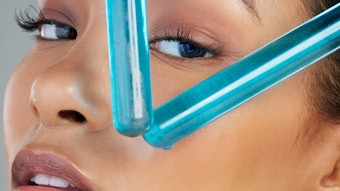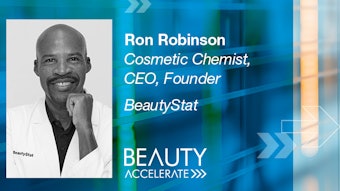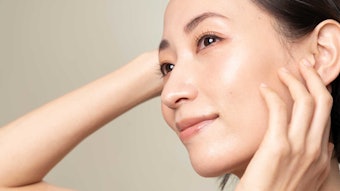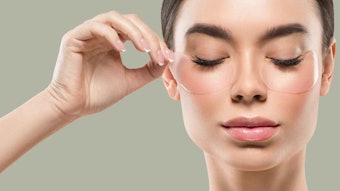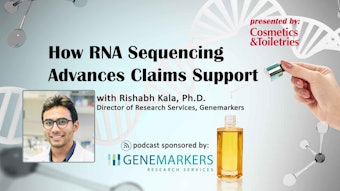
Read this article in its entirety in the April 2020 digital edition. . .
The hair care industry has changed more over the past decade than any other. This is not a consequence of new technological advancements, but instead relates to the increasingly rich, new Information Age. The rise of the internet has been accompanied by now commonplace phenomena such as online sales and marketing, social media, webinars, blogging, influencers and so forth that have forever altered the world in which we operate.
Perhaps most notably, smaller companies and start-ups no longer need to battle established incumbents for shelf space at traditional retailers. Products can be sold via online stores with no such space restrictions and directly ordered from snappy, attention-grabbing websites. Social media can be a powerful new source for marketing and advertising and subsequently, it becomes possible to successfully build brands in a manner that is different from the past.
Yet this Information Age can similarly cause headaches, wherein the hair care consumer can find it difficult to process and translate the vast quantities of information (and misinformation) that exists in the cyber world. Accordingly, some strange ideas can take hold and even grow within the environment.
But this new world does not rewrite the rules when it comes to ethically and legally communicating product benefits to consumers. These new outlets do not preclude such smaller companies from abiding by the rules, and all companies must ensure that communication messages and advertising claims are effectively authenticated.
A Reason to Believe
Advertising claims represent the fundamental reason to believe in a product. In the hair care world, these messages generally revolve around promises of performance benefits—for example, an improvement in sensory (softness, smoothness) properties, manageability and/or appearance. Further popular practice is to communicate a magnitude of such benefits, wherein it is commonplace to see such claims as 10× stronger, 5× smoother, 3× shinier, etc. Past articles in this column have described the ways by which such measurements are typically performed.1-3
There generally are not particularly sizable differences in the compositions of various hair care products on the market. By means of illustration, most commercial conditioners consist primarily of water, a quaternary amine surfactant and a fatty alcohol co-surfactant. There may be differences in the exact nature of these ingredients and their levels but the fundamental science is the same.
Accordingly, product differentiation is often attained or attempted through aesthetics, i.e., an attractive fragrance, packaging, etc., and/or an appealing communication message. There is always the temptation to make these stories increasingly elaborate and exorbitant to attract consumers, but failure to deliver on these promises can create ire in consumer, competitors and others.
Previously, the product development world was mostly self-policed by the larger companies who would challenge each other if it was felt that any of these messages became too egregious. Since then, consolidation within the industry has reduced the number of big companies, and this process does not appear so prevalent. At the same time, consumer advocacy and advertising standards groups provide a means for consumers to air their grievances if they feel they have been wronged by the product claims.
A third means of claims scrutiny becoming increasingly frequent is a practice I term cosmetic ambulance chasing. Initially, this constituted lawyers attempting to find individuals who have had (or claim to have had) an adverse reaction to a product. But this concept has further evolved into situations where a product was purchased based on the claims and these benefits were not realized by consumers, and so a class lawsuit is filed against the company for misleading the public.
There are now more media outlet sources than ever before with everyone seeking content. The trolling of advertising standard websites represents a cheap and easy way to find subject matter and invariably such decisions will be sensationalized to some extent in print. This negative publicity can irrevocably decimate a product or brand’s legitimacy, as soon as overnight, by questioning the fundamental reasons for believing. Thus, before going to market, there is a need to ensure that all claims are airtight.
Devil in the Detail
Case in point, in 2011, a major hair care brand was challenged via the Advertising Standards Authority (ASA) in the UK for a claim that its conditioner product “made hair 10× stronger.” In support of this claim, the company provided the ASA with data from a repeated grooming experiment, an approach that has been described in past articles of this column.1 The ASA accepted the data and concluded, “the method used by the advertiser to examine hair strength was a consumer-relevant method of establishing hair strength when brushing or combing;”4 but at the same time, the ASA questioned why testing had been performed on chemically damaged hair.
This is a common practice in the hair care industry, as it frequently leads to greater method sensitivity,5 and it is justified by industry folklore that most women utilize at least one chemical treatment on their hair. The ASA acknowledged this positioning but asked for data to back up this stance—but this information was not available. The company thus received a mild slap on the wrist and was asked to adjust its advertising to reflect that not everyone might expect benefits of the same magnitude. Nonetheless, headlines in the next day’s newspapers reported how the ASA had banned the company’s hair care ads as they were misleading to the customer.
Because of this situation, it is necessary to have data to back up every aspect of the claim including method validation/justification, hair type, application procedure, etc. It is also prudent to ensure that all data is within the company and at hand. When working with companies on their claim substantiation packages, a somewhat common occurrence is to hear that critical data relates to a specific ingredient with that information being provided by the ingredient supplier. While not necessarily questioning this data, it is extremely trusting for any company to place its brand or product’s reputation in the hands of third-party data.
Consumer or Instrumental Data
There are two common approaches for claims substantiation. On the one hand, products can be given to consumer test panels, wherein answers from questionnaires are supportive of intended positions. For example, if a majority agrees with a question that asks: “Did this product moisturize your hair?” then the proposition would seem justified.
A second option involves the use of instrumental measurements to demonstrate how the technical properties of hair have been altered. For example, one can measure reduced combing forces as a result of applying a conditioner to hair,6 or an improvement in technical shine as a result of using a silicone-based shine serum.3
Importantly, companies are not restricted to just one of these approaches. In fact, companies should be regularly performing both types of testing.
Moisture or Moisturization?
A recurring theme over the history of this column has been the differences between “consumer” language and “scientific” language.7 By means of illustration, the author’s firm receives regular requests to scientifically test hair treated with a given product in attempt to demonstrate increased water content and therefore justify a “moisturizing” proposition. Extensive experience with this measurement, however, has shown this outcome never transpires.8
Yet, in consumer testing, conditioner products are overwhelmingly perceived to induce some sort of “moisturization.” Therefore, such products are changing the properties of hair in some manner by which the consumer perceives “moisturization,” although this does not constitute an actual technical increase in hair water content.
. . .Read more in the April 2020 digital edition. . .
References
- Evans, T.A. (2013, Dec). Measuring hair strength, part 2: Fiber breakage. Cosm & Toil 128(12) 854-859. Retrieved from https://www.cosmeticsandtoiletries.com/testing/efficacyclaims/premiumMeasuring-Hair-Strength-Part-II-Fiber-Breakage-232884161.html.
- Evans, T.A. (2019, Nov/Dec). A soft touch. Concepts in hair softness. Cosm & Toil 134(10) 46-53. Retrieved from https://www.cosmeticsandtoiletries.com/testing/efficacyclaims/A-Soft-TouchConcepts-in-Hair-Softness-564871682.html.
- Evans, T.A. (2016, Jan/Feb). Equating the measurement of hair shine. Cosm & Toil 131(1) 28-34. Retrieved from https://www.cosmeticsandtoiletries.com/testing/efficacyclaims/Coiffed-Conundrum-Equating-the-Measurement-of-Hair-Shine-367691731.html.
- The Rose Sheet Report. (2011, Jul).
- Evans, T.A. (2014, Nov). Hair as a test substrate in the laboratory. Cosm & Toil. Retrieved from http://www.cosmeticsandtoiletries.com/testing/efficacyclaims/Hair-as-a-Test-Substrate-premium-282462371.html.
- Evans, T.A. (2011, Aug). Evaluating hair conditioning with instrumental combing. Cosm & Toil (126)8 558-563. Retrieved from https://www.cosmeticsandtoiletries.com/testing/sensory/premium-Evaluating-Hair-Conditioning-with-Instrumental-Combing-217611571.html.
- Evans, T.A. (2013, May). Consumer vs. scientific language: Relating in vivo to in vitro. Cosm & Toil 128(5) 300-304. Retrieved from https://www.cosmeticsandtoiletries.com/testing/invitro/premium-Testing-Tactics-Consumer-vs-Scientific-Language-Relating-In-vivo-to-In-vitro-218744901.html.
- Evans, T.A. (2014, Mar). Measuring the water content of hair. Cosm & Toil 129(2) 64-69. Retrieved from https://www.cosmeticsandtoiletries.com/testing/invitro/Measuring-the-Water-Content-of-Hairpremium-246571251.html.




